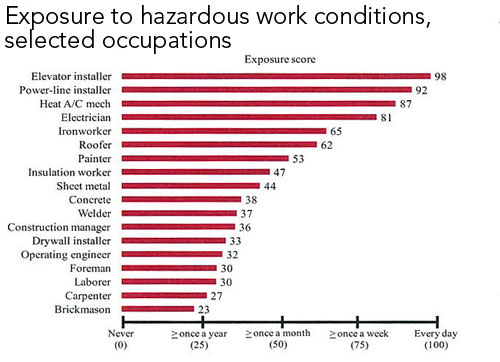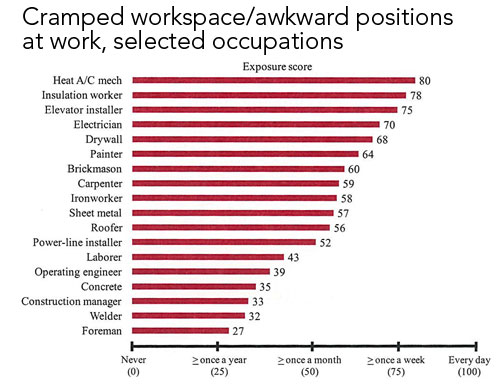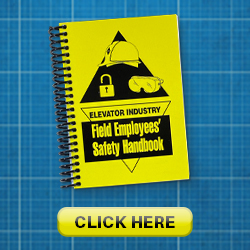In the distant past employers rarely provided protective gear on construction sites, employees were expected to bring their own tools and construction workers had a certain macho disregard for safety equipment. The advent of OSHA in 1970 changed the safety culture of jobsites nationwide and deaths and injuries have continued to fall every year since. Still, between 1992 and 2010, according to the Center for Construction Research and Training, an average of 730 lives a year in construction were lost to four primary causes: falls to a lower level, contact with electric current, highway incidents and being struck by an object. With the exception of highway incidents the elevator industry is uniquely exposed to the other three.
According to the Occupational Information Network (O*NET) exposure scores many construction occupations require working in high places and climbing ladders or scaffolds on a daily basis. These exposures can lead to fall-related injuries and death. In addition, elevator installers are exposed to hazards from electricity, equipment (cranes) and tools. These hazards can lead to electrocution, being struck by on object or other severe injuries. Working in cramped spaces or awkward positions weekly can lead to long term injuries and disorders of the lower back. In the charts below see how the elevator installation worker’s exposure ranks against other similar trades. (Note exposure scores: 0 = never; 25 = once a year or more but not every month; 50 = once a month but not every week; 75 once a week but not every day; 100 = daily)
An average of 730 lives a year in construction were lost to four primary causes: falls to a lower level, contact with electric current, highway incidents and being struck by an object.
This site, which is published in co-operation with the National Elevator Industry Inc. Field Employee Safety Committee, will always provide users with the most recent information on accepted guidelines (The Elevator Industry Field Employees’ Safety Handbook), safety products, links and suppliers. We welcome your feedback.
Source: The Construction Chart Book; The U.S. Construction Industry and its Workers. Published by the Center for Construction Research and Training, the research and training arm of the Building and Construction Trades Department, AFL-CIO. The chart book is posted online at www.cpwr.com















